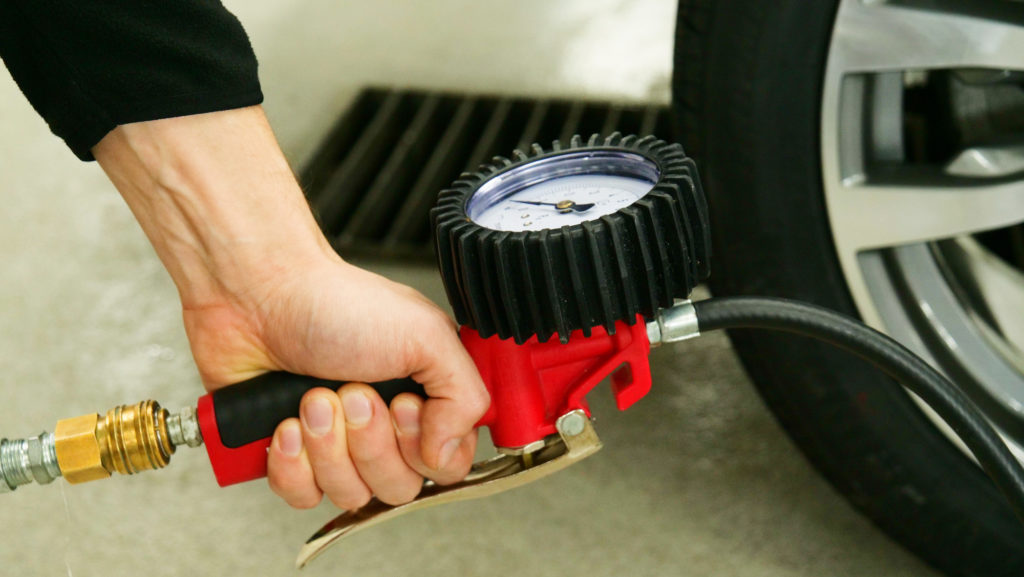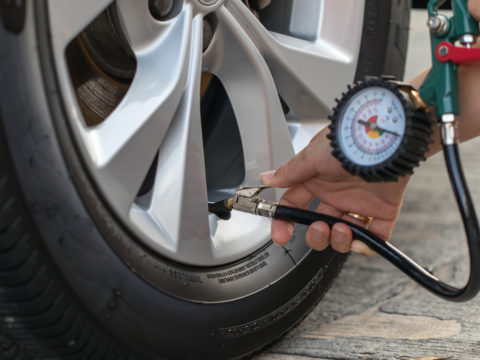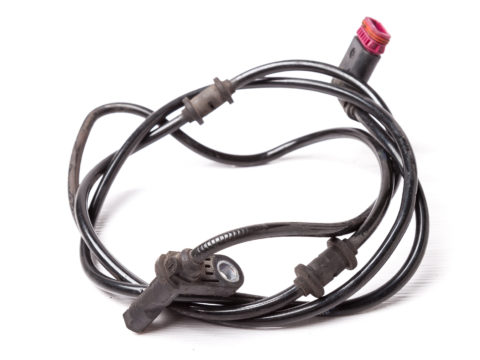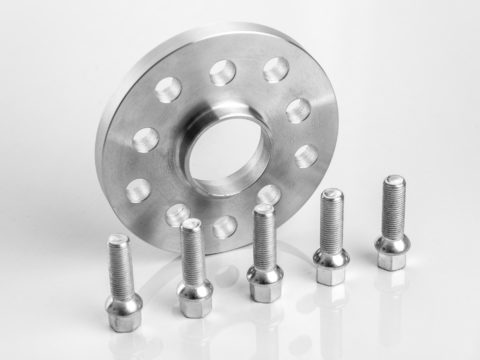Modern vehicles come from the factory equipped with a system that automatically monitors the tires’ air pressure. This safety feature can give a driver an advanced warning of a slow leak and help prevent breakdowns and even accidents.
So, when a vehicle has a tire pressure sensor fault warning over the dashboard, it can be both annoying and potentially dangerous. Let’s get to the bottom of this issue so you can understand what it means for you and your car.

Contents
What Does the TPMS Light Indicate?
A tire pressure sensor fault means that there is a condition affecting the Tire Pressure Monitoring System (TPMS) on the vehicle. Sometimes the light might come on to let you know there is a problem where the air pressure of a tire is too high or low. Other times, it means there is a fault with the system.
Check your owner’s manual, so you understand the difference.
Tire Pressure Sensor Location
Each tire has a tire pressure sensor installed inside it, usually attached to the valve stem where you fill the tire with air. Since there is one inside of each tire, any one of them could be the source of the problem causing a fault or warning upon the dashboard.
Causes of Tire Pressure Sensor Fault Blinking
There are a few reasons why the warning light for the tire pressure sensor might be blinking.
1) Tire Pressure Low
Depending on the car, a blinking TPMS light might mean that at least one tire is low. Some vehicles allow you to check the pressure remotely from the car’s interior, so you can press a button and see the air pressure for all four tires.
Other cars will only warn you that the pressure isn’t adequate. Then you have to get out and use a tire gauge to check each of them. Make sure that they’re all properly inflated according to the manufacturer’s recommendations.
2) Tire Pressure Sensor Failed
Tire pressure sensors have batteries that can fail. They usually last a fairly long time, but if they run out of power, it will trigger a warning upon the dashboard. Other times, the sensors can become worn out or corroded and stop working, causing a similar warning.
Either way, the sensor needs replacement if it no longer works.
3) Sensor Lost Connection
The sensors in the TPMS system report information to the car’s computer. If their connection becomes disrupted, the system will announce a fault over the dashboard. That can happen if you hit a hard bump or under certain other circumstances.
4) New Wheels or Tires
If you recently mounted new tires on your existing wheels or put new wheels on your car, you may need to reset the system. That’s because changes to the wheel and tire setup require reconnecting either the old sensors or new ones to the system. And, depending on the changes you made, the car might expect a pressure different than what you have set.
For instance, if you just swapped from your winter wheels to your summer wheels, you made need to adjust the pressure requirements for the system.
5) Changing Weather and Temperatures
Many people experience TPMS sensor issues when the temperature changes significantly in a short period. That’s because the air temperature affects the pressure in your tires. When it’s very cold, the sensors will see less pressure. And, as it warms up, the pressure will increase.
Why You Should Not Ignore the Tire Pressure Sensor Warning
Ignoring the tire pressure sensor warning is a recipe for making a minor issue into a much larger one. You should not overlook tire pressure sensor warnings because they are usually minor, easily remedied, or repaired, and the TPMS system is just trying to keep you safe.
Driving without adequate air pressure can be dangerous, as you could lose control of your car. You could also end up with a flat if you don’t act quickly at the first sign you’re losing tire pressure, as you could have a slow leak that might leave you stranded. Driving without the right tire pressure also has a negative impact on your mileage, decreasing your fuel efficiency.

How to Fix Tire Pressure Sensor Fault
Fixing a tire pressure sensor error is often very simple. You only need a couple of tools to check the pressure manually in each tire.
Tools and Equipment Needed
To fix an issue with your tire pressure, you’ll need an air gauge to measure tire pressure and a compressor.
Let the Tires Cool
To check your tire pressure, the tires have to be cold. So if you were out for a drive, let the car sit for a few hours or overnight.
Unscrew the Valve Stem Cap
Pick a corner of the car, and start with that tire. Unscrew the cap on the valve stem so you can access it.
Check the Air Pressure
Using your air gauge, press it to the valve stem, and read the air pressure. Compare that to the manufacturer’s recommendation for your vehicle setup.
Set the Proper Pressure
Adjust the air pressure by attaching the hose from the compressor to the valve stem and inflating the tire. Be careful not to overinflate, or you’ll have to use the back of the gauge to press the release button and let some air back out.
Re-Initialize the TPMS
Now that you know the pressure is correct, you can reset the TPMS. Each car is different. But, typically, that means turning the vehicle on and driving a very short distance. Then, following the prompts over the dashboard, you can re-initialize the system.
This procedure is also how you can make adjustments to your desired air pressure. For instance, if you plan on traveling with a heavier load than usual, most cars need a bit more air in the tires. You’ll have to tell the TPMS that you’ve made a change. Otherwise, the light may stay on.
How to Reset Tire Pressure Sensor Fault
If the sensor itself has only lost connection, you might be able to restore its operation by re-initializing the system. Just follow the prompts from the dashboard and the instructions in your owner’s manual. If the sensor has failed, it will need replacement. That means a technician will need to separate the rim and the tire, so you’ll need to bring your car to the shop.
How to Tell Which TPMS Sensor is Bad
Some cars will tell you right upon the dashboard if a sensor is bad. Other cars will only tell you that there is a problem, and you need to tell which TPMS sensor is faulty. To do so, you can often use a code reader to plug into the computer and diagnose the issue.
Alternatively, if you have extra wheels and tires, you could swap each wheel off the vehicle for a replacement until you isolate the one that’s causing the issue.
FAQs
Let’s review some common questions about faulty tire pressure sensors.
Why is my tire pressure light still on after filling tires?
Even after you’ve made the needed air pressure adjustment and verified it manually, you have to give the system an opportunity to check the pressure. That usually requires driving a short distance. Sometimes, it also requires pressing a couple of buttons.
Do I have to have tire pressure sensors?
Older cars didn’t have TPMS. But, if your car does have a sensor system from the factory, you need to have tire pressure sensors. Otherwise, your car will always show a fault.
How much does it cost to fix a tire pressure sensor fault?
Good news! Tire pressure sensors are relatively inexpensive. And since many faults can be corrected with only an air pressure adjustment, you might not even have to open your wallet at all.














